Matador Network's Blog, page 911
March 3, 2020
Win a Maine inn by writing an essay

Owning a small inn on an island in Maine might be a lifelong fantasy, conjuring images of a quiet, simple life by the ocean. Today, that dream could be closer than ever to becoming a reality. The Harbor Watch Inn on Swans Island needs a new innkeeper and to get the job, all you have to do is write the best essay. The “Win Our Inn” contest, which runs through March 31, invites you to submit a 350-word essay about why you would be the best person for the job.
“Here’s your chance to get a turn-key operation for next to nothing. Enter our essay contest for $99 and if your entry is selected by our judges, you win our 5-unit inn plus $25,000 in an operating fund,” the contest website reads.

Photo: Harbor Watch Inn/Facebook
The inn is small, but that only makes it easier to manage. While Swans Island isn’t exactly a hotbed of activity, the inn is located close to the local marine museum, beaches, and hiking trails.
Essays will be judged based on “subject matter, storytelling impact, composition and creativity of each entry,” and the winner will not only receive the deed to the property, but also $25,000 to be used for property maintenance. You’d better be prepared to run the inn for at least a year, however, as the winner is required to operate the inn for a minimum of 12 months.
You must be over 18 to enter, and the winner will be announced on May 1, 2020. 

More like this: The 25 most spectacular hotels in the world: 2020
The post Write an essay to become the new owner of an inn in Maine appeared first on Matador Network.

Live in Manhattan for free as a VIP

Living in Manhattan for less than $3,000 a month would be considered an absolute steal, let alone doing it for free. Downtown Alliance is looking for an Explorer in Chief to live rent-free off Wall Street this summer, and even get paid to capture video content of Lower Manhattan. The successful applicant will be expected to document the day-to-day experience of exploring life in Lower Manhattan, and even get to stay in top-tier hotel properties.
According to the press release, the Alliance is looking for “an urban explorer with a camera-ready personality, a keen eye, a distinctive voice and the chops to produce compelling, entertaining content. Ideal applicants will have a nose for hidden gems, and the ability to truly get inside a place, its people and attractions. Someone who is charismatic and comfortable as the center of attention but who knows that the location is, ultimately, the star.”
The winner will live in Lower Manhattan from June through August, and will get to take part in a variety of unique experiences. This includes VIP visits to top NYC attractions, going to hidden speakeasies, and dining at popular restaurants.
To throw your hat into the ring, you need to upload a 60-second video to YouTube showing why you’re a born Explorer in Chief. Once you’re done, paste the link to the video on the entry form, where you’ll also have to answer a few questions to help determine if you’re the ideal candidate for the job. The deadline is March 15, 2020. 

More like this: The ultimate LGBTQ guide to New York City
The post Get paid to live rent-free and explore Lower Manhattan this summer appeared first on Matador Network.

Schools canceling study abroad

Although the coronavirus is only severely affecting certain parts of the world, US universities are exercising extreme caution by canceling many study abroad programs and asking students to return to the US. This is particularly true in northern Italy, where several schools, including Elon University, Stanford University, Syracuse University, and New York University, all have campuses.
Even schools without dedicated foreign campuses are enacting major cuts to their study abroad programs. Seton Hall University in New Jersey announced Thursday that all spring study abroad trips were canceled. The University of St. Thomas in Minnesota is banning university-related international travel. Rutgers University in New Jersey has also announced a blanket ban on Rutgers faculty-sponsored study abroad programs, and will bring students who are currently studying abroad home early.
Some schools are keeping their study abroad programs open, but giving students the option of returning home if they wish. According to John Peters, dean of international programs at Marist College’s Florence campus, “As of today, our assessment is that we are comfortable staying open.”
And it’s not just student travel from the US that’s being affected. The virus has also drastically reduced the number of students coming to study from China — the largest source of international students in the US. 

More like this: Racist panic over coronavirus will not help the people of China
The post US universities are canceling study abroad programs over coronavirus appeared first on Matador Network.

Where to try pulque in Mexico City
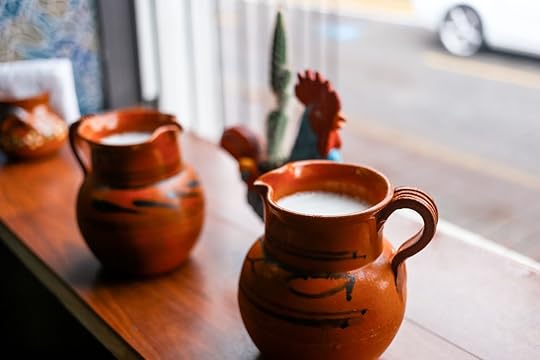
Something quite magical happens when you step into a Mexico City bar and order pulque. The drink is regionally distinct, and, due to its short shelf life, it’s rarely sold outside of Mexico. Pulque is made from fermenting the sap of multiple varieties of agave (the same plant used to make mezcal and tequila), and it has a long history dating back thousands of years to when it was believed to be a gift from the gods. Today, it’s having something of a resurgence.
Pulque is believed to have been first made between 300 and 550 CE by spontaneous fermentation of the agave sap, called aguamiel (not all that different than how it’s created today), though the creation and earliest consumption of pulque is shrouded in mythology. The Aztecs linked the milky and viscous drink to the gods Quetzalcoatl and Mayahuel, the latter being the goddess of maguey. According to legend, when Mayahuel’s grandmother struck her down for running off with Quetzalcoatl, her body was buried in Mexico and the maguey plant sprouted from her remains.
This religious drink was primarily reserved for ceremonial purposes and to heal illnesses. When Spanish colonists arrived in the 16th century, they forced Christianity and tried to outlaw pulque because of its association with other religions. Secular pulque production and consumption continued until after the Mexican Revolution. In the late 1800s and early 1900s, foreign breweries opened in Mexico and beer became the low-alcohol drink of choice in the country — especially in major cities.
It wasn’t until the early 2000s that pulquerías once again started to grow in popularity, and it’s safe to say that the once-sacred pulque has adapted to the 21st century. Today, you’ll find standard pulque along with curado pulque, which is made with flavors like guava, mango, oatmeal, celery, apples, and even oyster. It’s a drink for early in the afternoon (or even the morning, as many pulquerías open bright and early) with an alcohol content typically between 2 and 7 percent. In multiple pulquerías across Mexico City, you’ll find a mix of older Mexicans and a vibrant influx of younger drinkers embracing the history and culture of this traditional beverage.
Despite the simplicity of this ancient drink, it’s still enjoyed by Mexicans and foreigners alike. You can even add mezcal to it if you’re feeling daring. But no matter the flavor, every sip takes you back through centuries of Mexican culture. Pulque is just one of those drinks that demands reverence and an appreciation for its journey to the 21st century. These are the pulquerías in Mexico City to try the once-sacred drink for yourself.
Pulquería La Paloma Azul
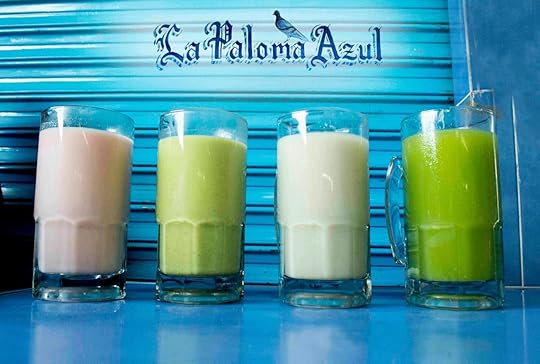
Photo: Pulquería La Paloma Azul/Facebook
One of the few pulquerías that have thrived despite all the changes in Mexico City while serving up authentic pulque and traditional Mexican fare to long-time customers. Pulquería La Paloma Azul opens at 9:00 AM and soon after that, you’ll find a blend of expats and tourists enjoying the flavored pulque on the menu. Flavors include pineapple, pine nut, mango, fig, and other colorful options. Snacks like tamales and tacos are available as well. It stays open until 9:00 PM for anyone looking to drink pulque through the late afternoon.
Where: Av. Popocatépetl 154d, Portales Nte, Benito Juárez, 03300 Ciudad de México, CDMX, Mexico
Pulquería Las Duelistas

Photo: Pulqueria “Las Duelistas”/Facebook
Las Duelistas is one of the most beloved pulquerías in the downtown area. Paintings of pre-Hispanic culture cover the walls, and a largely local crowd has kept this place open since 1912. There are around 40 flavors to choose from in addition to the classic straight pulque. Many of the tables are communal, and locals love to engage with tourists so don’t be afraid to start a conversation.
Where: Aranda 28, Colonia Centro, Centro, Cuauhtémoc, 06400 Ciudad de México, CDMX, Mexico
Pulquería de Los Insurgentes

Photo: Pulqueria Insurgentes/Facebook
This is one of the more popular tourist hot spots in the Roma Norte neighborhood. Each floor of this pulquería leads you through a maze of murals and music, from jazz to salsa to reggaeton. It’s exciting to just walk through this cacophony, let alone sip on some pulque while doing so. When you arrive at your table on the rooftop, order the cured pulque and get the salt for an extra kick. Pulque’s more popular cousin, mezcal, is also on the menu. At Pulquería de Los Insurgentes, you may also stumble into a salsa session or a pop-up flea market depending on the day you visit.
Where: Av. Insurgentes Sur 226, Roma Nte., Cuauhtémoc, 06700 Ciudad de México, CDMX, Mexico 

More like this: 9 of the best Mezcal bars in Mexico City
The post In Mexico, pulque is more than just a drink appeared first on Matador Network.

Forest bathing site connects people

In case you’ve never heard of forest bathing, it’s a popular Japanese practice (shinrin-yoku) aimed at reducing stress and improving health. It involves completely immersing yourself in nature, but unless you’re regularly out in your local wilderness, you might not know where exactly to start. To help aspiring forest bathers on their journey, Forest Bathing Finder is launching a new website designed to connect hikers with trained guides from all over the world. The site allows forest bathing guides to create profile pages, list their qualifications, propose routes and venues, schedule walks, and accept payment.
Alexis Abramson, the site’s CEO and founder, said, “Forest bathing is what yoga was about 40 years ago — there’s that level of excitement. We’re so happy to offer this website as a place where forest bathers and guides can safely connect and interact. Forest bathing walks are powerful for both our physical and mental well-being. These slow-paced walks have been proven to reduce stress, boost feelings of happiness and free up creativity; as well as lower heart rate and blood pressure, improve the immune system and accelerate recovery from illness. Science has finally proven what we have known all along — nature is a healer!”
Prospective forest bathers can use the site to sign up, connect with guides, and explore the best, most convenient places to walk in nature.
As a walker, the price will depend upon your guide and the nature of your hike. As a guide, it costs $19.95 per month to set up a profile, with the first three months being free.
If you’re not entirely convinced by the idea that a quiet walk in the woods can achieve great results on your physical and mental health, check out Matador Network’s Supervising Producer Kati Hetrick and filmmaker Mike Dewey as they try it out in Japan. 

More like this: The best places in the US to try forest bathing
The post A new forest bathing service will connect prospective forest hikers with guides appeared first on Matador Network.

March 2, 2020
Backcountry skiing in Northern BC
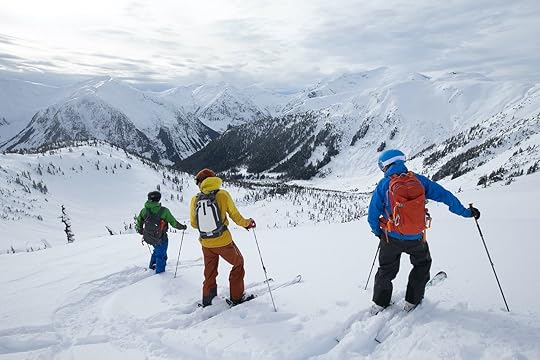
British Columbia’s major ski resorts close to the US border are world-class in every sense. High-speed lifts, fine dining, bubbly spas waiting at the hotel. On the other hand, the ski towns of Northern British Columbia — known to locals simply as “The North” — are noticeably, and intentionally, not like that at all.
In The North, you’re more likely to ride a T-bar than a six-pack chairlift. And $15 cocktails? Only if you order a double. What you will find is North America’s most community-driven ski scene, a collection of small towns, and hand-crafted ski areas free of the continued conglomeration enveloping the resorts further south. The Kootenays may have the Powder Highway, but The North has Highway 16.
Highway 16 — the Highway of Legendary Stoke
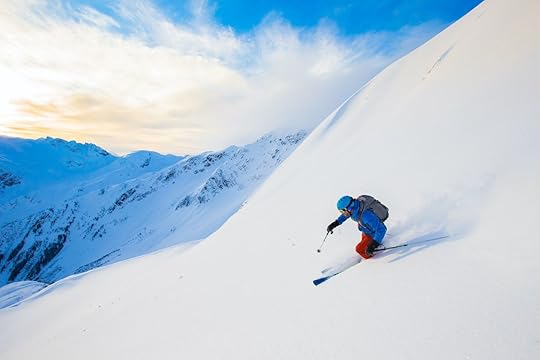
Photo: GROGL/Shutterstock
Highway 16 connects the towns of Smithers and Terrace. It’s a span of just 126 miles but accesses a lifetime of ski exploration. Smithers is a community of barely 5,000 residents set amongst the jagged peaks of the Hazelton Mountains that rise high above treeline. It’s the hub of skiing in The North, offering easy access to designated backcountry terrain and small community ski areas.
Smithers is a 13-hour drive north of Vancouver, but you’re better off taking a 90-minute flight from Vancouver International Airport. At the other end of Highway 16, or a two-plus-hour drive west, lies Terrace, home to 16,000 residents and its own airport connecting with Vancouver.
“We are surrounded by amazing terrain that is relatively easy to access if you’re willing to put in a bit of work,” says Dave Walters, co-owner of the Local Supply Co. gear shop in Smithers. “It’s always worth the effort. Very seldom we aren’t able to find untracked turns.”
Here, above the 56th parallel, the slopes are as empty as an elementary classroom during recess. The ski areas offer inbounds and backcountry, with clearly marked runs that make lapping a day in the “side country” nearly as easy to navigate as the lift-accessed runs — though you’d better come prepared to earn those face shots.
A scene hand-built by the communities that ski here
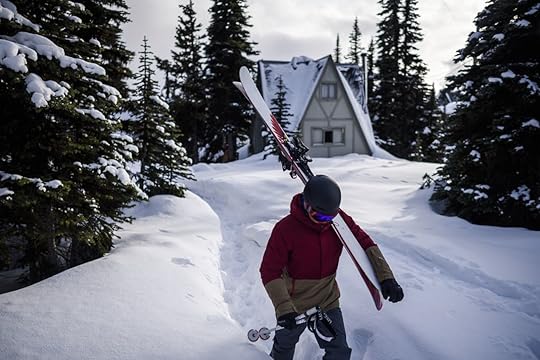
Photo: Destination BC + Andrew Strain
Nearly every skiable spot here developed in the same way: A group of local skiers and boarders came up in the summer to make runs. A community formed around those runs, with local sponsors financing maintenance and volunteers performing upkeep by hand. The surrounding community embraces the effort, protecting the land so that both locals and visitors can enjoy what it offers. No big dollar investors, and no excuse to sit in the lodge all day. Bring normal ski or snowboard gear, plus backcountry touring equipment that includes a beacon, shovel, and probe. Touring poles and a winter-specific backpack are necessities as well — along with enough Clif Bars to feed a small army.
Hankin Evelyn — the first backcountry-only ski area
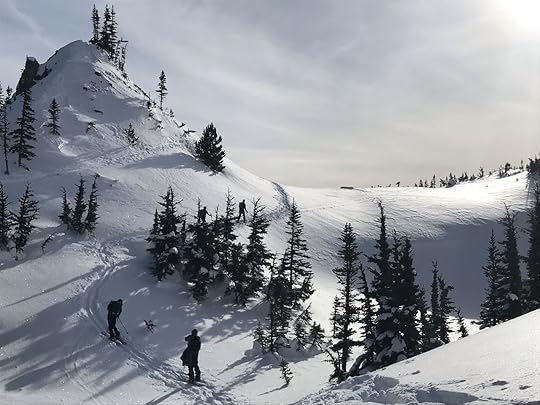
Photo: Tim Wenger
North America’s first lift-free and lift-ticket-free ski area, Hankin Evelyn Backcountry Recreation Area sits about 30 minutes north Smithers. The trailhead is a few miles up a bumpy four-wheel-drive road off the highway that dead-ends at the parking lot. You’ll see runs cut into Hankin Peak and a few on neighboring Evelyn as you approach, but that’s about all you’ll find as far as development.
The area is the brainchild of local skier Brian Hall, who brought to life this idea of a backcountry zone where skiers and boarders could familiarize themselves with backcountry best practices and gear use in a lower-risk setting, skinning up to a hut and skiing runs cut into the forest below. Once comfortable on the 13 cut runs, Hall’s thinking went, they could then make their way into the high alpine terrain up above the hut.
The area officially debuted in 2010 and was immediately embraced by the community. During the offseason, local fire crews and forestry workers help to maintain the runs and ski touring routes. It’s all done on a volunteer basis, with donations assisting a local farmer whose land you’ll cross over on the access road to the parking lot. Hall’s work has since spawned the Bulkley Backcountry Ski Society, a local organization working not only to map and maintain local backcountry ski zones but to educate the public on how to safely access them.

Photo: Tim Wenger
An uptrack is established from the parking area to a day-hut just below the treeline. The ascent on skins is steep at points but frequent switchbacks ease the burden. The hut awaits about 1.5 hours up the trail, a solid place to recoup over a snack while looking at conditions to decide how much further to ascend and, ultimately, which runs to lap. If conditions allow, an additional 20-minute push up from the lodge takes you about halfway up the Hankin Peak bowl, the summit of which is generally not safe to ride until late March at the earliest. The best out-run to avoid a wicked traverse is Run 4A down from the hut at the end of the day. There is an old fire cabin that rents out overnight for a moderate fee. Beyond that, the entirety of Hankin Evelyn is free to access.
Hudson Bay Mountain — keeping it old school

Photo: Destination BC + Andrew Strain
Most ski resorts don’t even have T-bar lifts anymore, let alone use one as the primary lift access from the base lodge. Hudson Bay Mountain, just outside of Smithers, keeps it old school. Hop the Panorama T-bar to access 1,750 feet of intermediate and challenging in-bounds vertical, but bring your touring gear because the best powder is found out of bounds. The Ozone area, a section of backcountry terrain accessed via a quick traverse from the top of the main T-bar, is made up of about eight defined runs maintained by local volunteers from Smithers. Runs are informally named after the “borrowed” street signs posted on trees near the drop-in points, so you’ll find yourself heading both up and down trails called “Handicap Access” or “Parallel Parking.” (The signs are also a worthy photo stop.)
After traversing from the Panorama T-bar on the Skyline Connector run, pass through the Ozone gates and work your way across to the drop-in points for these runs. Signs are not readily available, so ski with a local who knows the area. Drop in wherever you feel pulled to a particular line, and cut right upon reaching the Ice Fall Traverse, which spits you out near the bottom of the Skyline Lift. You can also skin back up from the traverse, getting in a half-hour of cardio while avoiding the lift ride. A couple of small signs note the traverse. If you miss it, you’ll end up on the Rotary Club Trail To Town, a 2.6-mile run from the base of the Skyline Lift down into Smithers.
Stop for lunch at Whiskey Jack’s Pub in the lodge and enjoy a burger while taking in views of the surrounding Hazelton Mountains. To really get the community vibe in full, take the Trail To Town — easily the area’s most unique feature — back to Smithers at the end of your day. Or, start your day (or evening) with a challenging 90-minute skin up from the trailhead to the Skyline Lift. No lift ticket is needed to access this trail, and it’s two-directional.
“A lot of people will get off work in the afternoon, strap on their skins, and make it as far up the trail as they can before dark,” says Walters. “Then they’ll ride back to town in time for happy hour.”
Shames Mountain — a community-owned ski hill
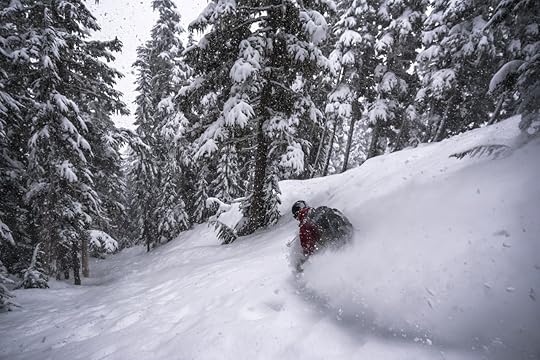
Photo: Destination BC + Andrew Strain
Twenty minutes from downtown Terrace, Shames Mountain is an incredible story of a community coming together to save its ski hill. When the nearly 2,000-acre ski area was built in the early 1990s, it was slated to be the “next big thing,” but the private owners who cut runs into the hill and put in a chairlift and t-bar quickly ran into financial troubles. It simply wasn’t accessible enough to attract the hordes of skiers visiting the bigger resorts closer to the American border.
“The private owners thought they had a Whistler concept,” says Christian Theberge, General Manager of My Mountain Coop, which now operates the ski area. “They made a lot of good infrastructure decisions, but the population just isn’t here and they lost a lot of money.”
The community rallied for a solution, and a non-profit group called Friends of Shames was created. Through grant-funded feasibility studies, the group concluded that a member-owner co-op structure would allow the hill to remain open, financed by grants and corporate donations in addition to its member-owners. The question then became raising the funds. Would local residents actually be interested in buying a share of their ski hill?
It turns out they were interested, and today there are more than 1,500 local shareholders. The co-op has also purchased new equipment including snowcats, investing more than three million Canadian dollars ($2.25 million) into mountain infrastructure. On any given day, nearly half the people skiing the mountain actually own a piece of its operation. Many of the remaining skiers are school groups and expert-level skiers and snowboarders drawn by the resort’s steep pitch, ample powder, and easy access to backcountry touring terrain.
“When I got here, we were doing 18,000 ski visits per year,” says Theberge. “This year we’re on pace to do 30,000… Our focus has been our local market, but our destination market comes for the backcountry terrain.”

Photo: Tim Wenger
That terrain is among the best resort-accessed backcountry in North America, with over 7,000 acres in 26 distinct touring zones. Backcountry Skiing Canada has compiled detailed trail maps and zone information, including access points and info on difficulty. Most tours take skiers above treeline and lead down through thick forest to a drainage runout, eventually funneling back towards the ski area or highway. The easiest to access is the Mystic Valley Trees, requiring about an hour of touring to reach. Other zones like East Ridge and Fay-zurs are full-day trips in themselves, taking at least four hours to skin to, plus descent and exit time. The lodge rents all necessary backcountry gear in case you didn’t bring it with you.
Whether you tour or stay inbounds, be ready for deep. Due to its coastal location, the mountain routinely receives more than a foot of snow per storm and averages 475 inches of snowfall annually. Fortunately, the runs are steep, often sending skiers bouncing down pillow lines made entirely of snow from the most recent storm.
When backcountry conditions aren’t safe, stick inbounds on runs like Hangover and AOT, skier’s right from the top of the Red T-bar. The trees here after a big snow are like navigating a tight canyon in a kayak. Lean in and flow with the terrain, letting it guide you across the curves of the mountain and between the trees. By February, enough snow accumulates here that many tree bottoms are encased in a mound of blue ice that reflects the branches’ frosted white tips. As beautiful as it is, keep your eyes focused downhill because one wrong turn and you’re headfirst into a mound of soft powder.
“You have to make good route choices, that’s for sure,” says Theberge. “You have to be good on your feet to handle 30-40 centimeters of snow, and we get that commonly.”
Other backcountry access points and local tricks of the trade

Photo: Destination BC + Andrew Strain
If your crew is ready to hit unmarked terrain, you have a few options. Skeena Cat Skiing accesses chunks of a 148,000-square-acre area north of Smithers and has overnight tent lodging at Gail Ridge ski area. For a swankier, all-inclusive experience, Skeena Heli-Skiing operates out of the Bear Claw Lodge, set on the bank of the Kispiox River about two hours north of Smithers.
Anywhere you venture out of bounds, always follow backcountry best practices. “Avalanches here are low frequency but high impact,” Walters says. Before heading out in the morning, check Avalanche Canada for up-to-date conditions. As with any backcountry terrain, always carry a beacon, shovel, and probe, and never ride alone. There’s a lot of open wilderness, and it could take search and rescue quite a while to find you should something happen. Because cell service isn’t guaranteed up here, your best bet for on-mountain communication is to give everyone in your group a walkie-talkie. To be prepared in case of an emergency; at least one person in your party should have a Bivy Stick or similar satellite transmitting service.
The towns have you covered for gear, rentals, and aprés. Any gear you don’t bring with you can be found at Local Supply Co. in Smithers, a fully stocked retailer that blends the best of both a local skate/snow shop and a full-service REI store. “In our store we see firsthand the growing interest in backcountry skiing and splitboarding,” Walters says. “As that community grows, newer areas are developed, and we all benefit from that.”
After a full day of skiing, gather at Smithers Brewing Company for aprés before grabbing dinner at Telly’s Grill or the Roadhouse. Terrace has a similar post-ski circuit, with a happy hour pint at Sherwood Mountain Brewing often leading into more revelry at the Skeena Bar & Social House or Don Diego’s downtown. 

More like this: Here’s how to explore British Columbia’s wilderness with zero outdoors skills
The post Independent, low-tech ski areas are the draw in Northern British Columbia appeared first on Matador Network.

Denali National Park itinerary

Most visitors see Denali National Park from a bus window and a few scenic overlooks. There’s nothing wrong with that per se — it’s one of the most accessible ways to see extremely remote and rugged land. But if you are willing to get out into the wild, you’ll be one of the only ones to do so.
To maximize your time spent in the wilderness, park at the Denali National Park visitor center or take a shuttle there, and just go. There are 13 marked trails around this area, plus the wide-open spaces you’re welcome to. This suggested itinerary is one of the best ways to spend a summer day in Denali’s breathtaking wilderness. Start early, pack a light jacket in case of wind or rain, and wear your best hiking boots. This is going to be a day to remember.
Hitting the trail
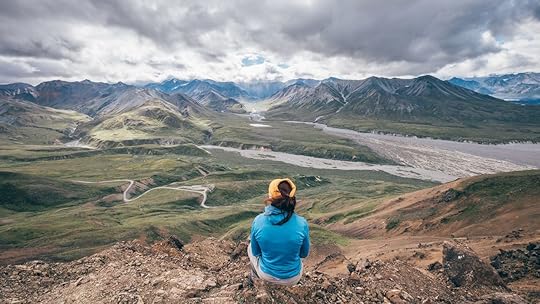
Photo: attilio pregnolato/Shutterstock
The National Park Service Discovery Hikes depart from the Wilderness Access Center across the way from Riley Creek Mercantile at 8:00 AM sharp. These are great if you want a moderate to strenuous hike with a guide and to learn some backcountry basics from a pro. You’ll navigate through dense vegetation, cross water, and tackle uneven terrain. But where that terrain will be is anyone’s guess. It won’t be announced beforehand — some are a quick walk away; some are a two-hour bus ride into parts unknown. Because of this, leave your day wide open and pack plenty of snacks. Be sure to sign up at the visitor center a day or two in advance.
If you prefer to set out into Denali’s wilderness immediately and on your own, start with an easy and uncrowded morning hike to and around Horseshoe Lake. The trailhead is just north of the visitor center. The earlier you go, the more likely you are to spot wildlife like moose or caribou, and Horseshoe Lake is a great spot for critter-sightings as well. A beaver dam can be found just off-trail to the north, and you also might catch other waterfowl and moose livening up the morning serenity.
Lunch with a view
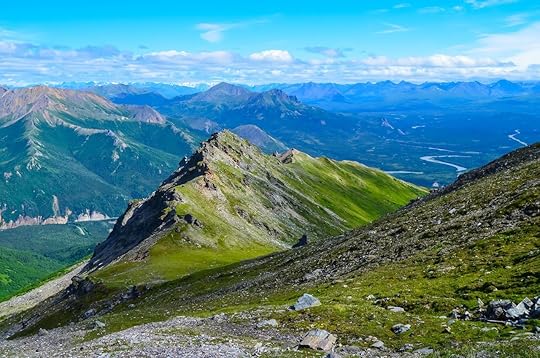
Photo: Matej Halouska/Shutterstock
Head back south on the Taiga Trail with its spruce, aspen, wildflowers, and plenty of berries for emergency snacking, breaking west for a long hike up to Mount Healy Overlook. It terminates at an open, albeit windy, plateau looking southeast over all of your fellow hikers. If the wind isn’t too much, this could be a nice spot for lunch. Otherwise, stay on flatter terrain and break southwest for a meadowy trek along the Rock Creek Trail — 2.4 miles, with great views of Mount Healy’s ridgeline — all the way to the sled dog kennels. Spend the afternoon with a pack of huskies. Denali is the only park manned by canine rangers, and they’re the main mode of transportation come winter.
Photos worth writing home about

Photo: Gail Johnson/Shutterstock
If time allows, take your car or the free shuttle out to Savage River at mile 15. Remember, wherever you are, that you don’t have to stay on the trail. Set out on the Savage River Loop — a mellow walk along the water but fairly uneven terrain — and find a quiet off-gravel spot near the water to work on your long-exposure photography. Spend a moment on the bridge looking for foxes and Dall sheep, or turn around and figure out which mountain is which, Mount Healy or Mount Margaret. Head north into the foothills, up the icy gray river, and further into the canyon for some serious isolation. This is what Denali’s about. Note that in the height of summer, the last shuttle departs Savage River at 9:30 PM. Be sure to check the schedule that applies to your trip. 

More like this: How to see Denali National Park by bus in one day
The post How to spend the perfect day in Denali out in the wild appeared first on Matador Network.

Best gay bars in NYC's West Village

For the past decade, queer communities around the country have lamented the death of the American gay bar. In 1976, there were 2,500 gay bars nationally; today, there are fewer than 1,400 worldwide. As dating apps become digital meeting places, pop-up circuit parties become modern dance halls, and straight establishments become safe spaces to sip cocktails with queer friends, there isn’t always a need for the bars that once drew LGBTQ communities together. Still, every once in a while, a new gay bar is born, and it’s worth celebrating the arrival. That’s why we’re honoring the latest drag bar to sashay its way into New York‘s West Village.
Boots and Saddles, a glory-hole-in-the-wall drag bar, shuttered over a year ago and left a vacancy in the hearts of downtown’s queer-bar community. Cue Eric Einstein and Justin Buchanan — the brains behind both Pieces and Hardware Bar — who did a gut renovation of the space, slapped on a fresh coat of paint (the 1980s-style street art is by Anthony Pugh), and got the old queen-club up and kicking as if no time has passed.

Photo: Playhouse Bar/Facebook
The space’s newest iteration is Playhouse Bar, a nod to the now-defunct Actors Playhouse that once occupied the block. With a spacious stage and dance floor, Playhouse feels like a throwback to a time when the West Village was still the epicenter of queer life. Be sure to visit for a performance by NYC’s greatest homegrown queens (Pixie Aventura, Sherry Pie, Bootsie Lefaris, and Izzy Uncut are all worth their weight in dollar bills). After watching one of the local drag shows, you may even be convinced that the American gay bar is alive and well after all.
Where: 100A 7th Avenue South, West Village
Bar hopping in New York’s OG gayborhood
While the West Village isn’t precisely the LGBTQ hot spot it once was, the rainbow sidewalks still lead to a bevy of queer watering holes unrivaled by most gayborhoods in the world. Here’s a mini-guide for spending the night in New York’s OG gayborhood after checking out Playhouse.
Julius’
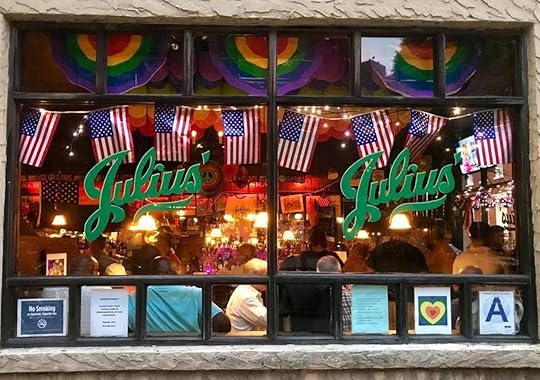
Photo: Julius’/Facebook
In 1966, three years before the first brick was thrown as Stonewall, Julius made headlines in the fight for gay rights when activists held a “sip-in” to protest laws against serving alcohol to homosexuals. Today, this unassuming alehouse is one of New York’s oldest gay bars still in operation. Grab a greasy hamburger or plate of fries from the bar’s grill to start your night where the fight for gay rights began.
Where: 159 West 10th Street
Pieces
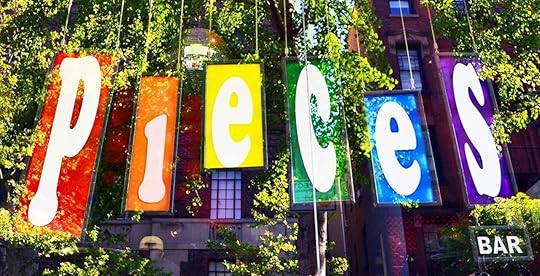
Photo: Pieces Bar/Facebook
This friendly neighborhood gay bar is the ideal meeting place to gather your gaggle and catch a drag performance before hitting up the rest of the ‘hood.
Where: 8 Christopher Street
Henrietta Hudson

Photo: Henrietta Hudson/Facebook
The only balls you’ll find in this historic lesbian bar are on the pool table. If you’re looking to cut a rug, plan to visit on Friday or Saturday night when ladies heat up the dance floor.
Where: 438 Hudson Street
Cubby Hole
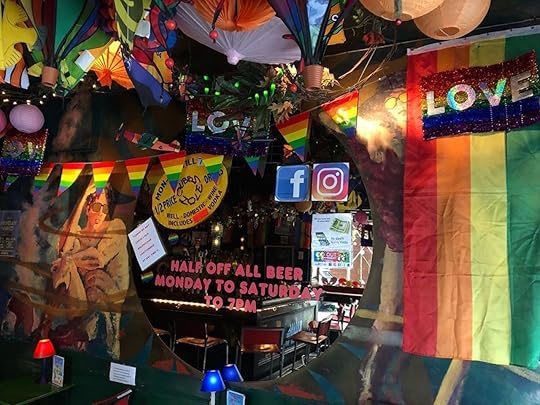
Photo: Cubbyhole bar NYC/Facebook
You’ll find this cozy lady lounge a 10-minute walk from Henrietta Hudson. Even though the jukebox is usually pumping great tunes picked by patrons, don’t expect any dancing — it’s a tight fit. (…That’s what she said.)
Where: 281 West 12th Street
Big Gay Ice Cream

Photo: Big Gay Ice Cream/Facebook
The Village’s gayest sweets shop is open until 11:00 PM Sunday through Wednesday and until midnight for the rest of the week. You can lick a Salty Pimp (vanilla ice cream with dulce de leche, lightly salted and dipped in chocolate), eat out Strawberry Shortcake (a vanilla sundae with strawberry sauce), or grab a fruity Rainbow Paleta and suck it on your way to the next bar.
Where: 61 Grove Street
Monster Bar
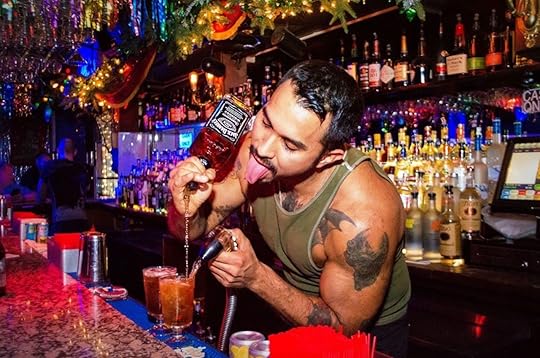
Photo: The Manhattan Monster Bar/Facebook
This bi-level dive is a piano lounge up top and a dance party down below. From show tunes to techno, this is a necessary choose-your-own-adventure pit stop for the quintessential West Village experience.
Where: 80 Grove Street
Stonewall Inn
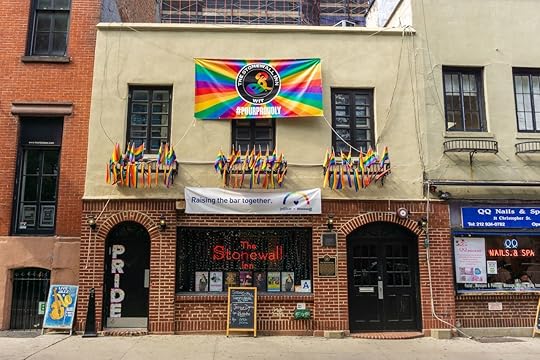
Photo: Massimo Salesi/Shutterstock
Famous for its role in the events of 1969, this hallowed hall is more than a bar — it’s an iconic institution. Pay your respects by grabbing a nightcap and sharing some gratitude in the place where Pride began. Because of our ancestors, LGBTQ folks can bar hop around the West Village with impunity. Three cheers for the queers that came before us!
Where: 53 Christopher Street 

More like this: The ultimate LGBTQ guide to New York City
The post The West Village’s newest drag bar proves the NYC gay bar is alive and well appeared first on Matador Network.

Why Atlanta is a good sport town

America loves its sports. On any given visit to mid-size and large cities alike, travelers are bound to see monuments to athletes, sports museums, and the jersey-wearing masses. Certain cities have built an entire outsized reputation on this dedication to sport: Boston, Chicago, and Philadelphia, to name a few.
And then there’s Atlanta.
Atlanta is one of just 14 cities in the US with four or more major sports teams: the Falcons (NFL), the Hawks (NBA), the Braves (MLB), and Atlanta United (MLS). The city has hosted the Olympics as well as multiple Super Bowls and college football championship games. This year, from April 4 to 6, the city is hosting the Final Four of the NCAA men’s basketball tournament in the Mercedes Benz Stadium. It will be the fifth time the city welcomes thousands of college basketball fans for the Final Four.
Yet when you talk to sports fans across the country, you hear a common refrain: Atlanta is not a sports town. In 2012, sportswriter Rob Parker wrote a story for ESPN where he declared, “Without question, Atlanta is the worst sports town in America.” He went on to call Atlanta “the epitome of the bottom of the barrel when it comes to fan support,” citing his 25 years of Atlanta sports coverage.
This lackluster game attendance has led to some pretty embarrassing mishaps, like when the Falcons were caught pumping fake fan noise into the stadium during the 2015 season.
Atlanta’s collective sports record doesn’t help. The Falcons became a professional football team in 1966, and it took until 2008 for consecutive winning seasons. The Falcons made it to two Super Bowls, and lost. The latest, after the 2016 season, ended in the Falcons blowing a 28-3 third-quarter lead to the Patriots. The Hawks consistently make it to the NBA playoffs but have only had eight winning seasons since 2000. The Braves have only had six losing seasons since 2000 but seem to always find a way to crash at the last minute (go back further and the team made it to the World Series five times in the 1990s but won only in 1995).
Atlanta sports can feel a little like Sisyphus, forever on the cusp of reaching the top but never quite getting there.

Photo: Paparacy/Shutterstock
I went to Auburn University in Alabama, a little over an hour and a half from Atlanta, and I’d hear people from Georgia frequently lament the state of their state’s teams. Still, Atlanta remains the epicenter of professional Southern sports. On a recent trip to Atlanta, a college friend from Georgia, Cal Tinsley, put it this way: “It’s the heart of the South’s sports almost because of central location more than history or pride.”
Which is perhaps the best way to judge Atlanta as a sports town. Say what you will about the fan attendance and the records, Atlanta is the sports hub of the South, and it’s a great place to experience a championship game.
On the second Saturday in February, I took an early flight from New York City to Atlanta. I checked into the Aloft hotel downtown and made it to the closest sports bar, Park Bar, just in time to watch Auburn men’s basketball tip-off against LSU. Auburn made it to the Final Four for the first time in school history in 2019, and if we made it again, playing in Atlanta would be like playing in front of a home crowd thanks to the proximity and rabid fan base — a trip to Atlanta for an Auburn alumni typically means running into the many Auburn grads who moved there for work.
It took me about 10 minutes to remember why Atlanta is such a lovely place for anyone into college sports. The College Football Hall of Fame is here, as is the season opening college football game between a school from the SEC and the ACC (arguably the two best conferences, though which gets first depends on who you ask). Then there’s the SEC championship game, which often serves as a pre-playoff of sorts before the national playoff (three of the last five national championship teams had to first win the SEC).

Photo: EQRoy/Shutterstock
It also helps that the Braves have built a culture of baseball in and around Atlanta. On an Uber ride past midnight on a Saturday, the driver was quietly listening to baseball talk radio. He told me he’s been a Braves fan since the glory days of the ‘90s, and his kid plays now. He says the future of baseball in Atlanta is bright.
“When people talk about baseball being only for old people,” he says, “it’s because they’re old. They act like all these little leagues don’t exist.”
You don’t have to have a winning team to have a culture of sports in a city. Atlanta’s sports draws are enough to qualify in themselves, something that’s clear when staring at the Olympic rings in Centennial Park, which directly face the College Football Hall of Fame. But if you need more than sports monument stops and museums, go to an Atlanta United game in Mercedes Benz Stadium. Atlanta’s soccer team regularly sets MLS fan attendance records: The top five MLS games in terms of attendance, all more than 71,000, were set at Atlanta United games.
Atlanta wouldn’t be hosting the 2020 Final Four tournament if it wasn’t a good sports town — not to mention all of the other biggest games in sports that regularly take place here. That championship atmosphere is the Atlanta sports scene that so many people from around the country come to see. Atlanta’s teams don’t have walls of trophies like Boston’s teams, and maybe there aren’t as many live-and-die-for-the-game fans as there are in Philadelphia. But there are few cities where it’s more fun to watch a championship game than Atlanta.
When you go
" title="Atlanta’s BeltLine is the future of American urban green spaces" target="_blank">Atlanta’s BeltLine is the future of American urban green spaces
The post Atlanta is a great sports town for championships. No really. appeared first on Matador Network.

Seventeen new possible planets

When news breaks that a new planet is discovered, you expect the person responsible to be a world-renowned scientist or seasoned NASA expert. Most recently, however, it’s a PhD student who is being credited with discovering not one, not two, not ten, but seventeen new planets. Michelle Kunimoto, PhD candidate at the University of British Columbia in Vancouver, is the lead author of a new paper published in The Astronomical Journal, which describes the makeup of 17 new possible planets.
While most of the planetary candidates are large gaseous bodies, at least one planet is Earth-sized and rocky. Planets bearing similarities to Earth are rare, and this particular planet, labeled KIC-7340288 b, is thought to be 50 percent larger than Earth. It’s also located in close enough proximity to its star for it to potentially support liquid water and be habitable.
Kunimoto made the discovery by using a technique that monitors a star’s light for changes in brightness. When the star’s brightness fades temporarily, it indicates that a planet may be passing in front of it. Her findings cannot be seen through a telescope.
Kuminoto’s findings still need to undergo further verifications to be officially declared planets. At this stage, they are only “planet candidates.”
During her undergraduate degree at the same university, Kuminoto discovered four planets beyond our solar system. 

More like this: These images from NASA will rock your world
The post Canadian PhD student discovers 17 new possible planets appeared first on Matador Network.

Matador Network's Blog
- Matador Network's profile
- 6 followers



